Search results for: 'bronzezeit'
-
 Cylinder Seal from the late Uruk period
Cylinder Seal from the late Uruk periodSmall seal made of appealing igneous rock. The engraved wave pattern is typical for the late Uruk period of Mesopotamia.
Price: on request Clay idol from Syria
Clay idol from SyriaFemale figurine from Bronze Age Syria, 3rd to beginning of 2nd millenium BC. With characteristic bird shaped head.
Price: on request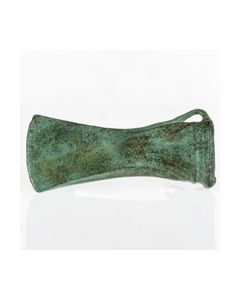 Socketed axe head from Southern Germany
Socketed axe head from Southern GermanyA typical bronze tool of the late Urnfield culture or early Hallstatt culture. It was found near Regensburg in Southern Germany by a voluntary archaeologist.
Price: on request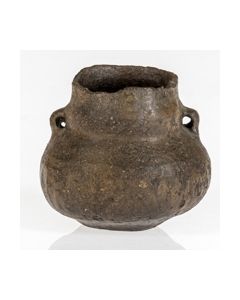 Vessel of the Urnfield culture
Vessel of the Urnfield cultureNicely preserved pottery dating to the Urnfield period, the transition between Bronze Age and Iron Age in Central Europe. Found in Southern Germany. 1200 to 800 BC.
Price: on request Beilkopf aus der Jungsteinzeit
Beilkopf aus der JungsteinzeitKlinge eines dünnblattigen Dicknackenbeils. Trapezförmiger Körper mit grob bearbeiteten Seiten. Ganggrabzeit bis Dolchzeit.
Price: on request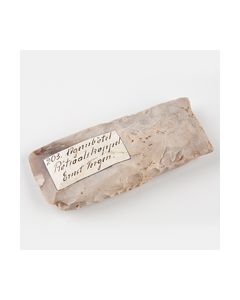 Flaches Rechteckbeil der Trichterbecherkultur
Flaches Rechteckbeil der TrichterbecherkulturAlle Seiten fein bearbeitet, jedoch nur die Schneide poliert. Flache, dünnnackige Klinge. Gefunden um 1900 in Negernbötel, Schleswig-Holstein.
Price: on request Schmales Dicknackenbeil der Trichterbecherkultur
Schmales Dicknackenbeil der TrichterbecherkulturDer kleine und elegante Beilkopf beeindruckt durch seine gute Erhaltung und ausgewogenen Proportionen. In diesem Zustand absolut museumswürdig! Ganggrabzeit bis Dolchzeit.
Price: on request Kleines Trapezbeil der Trichterbecherkultur
Kleines Trapezbeil der TrichterbecherkulturKlinge eines kleinen Beils mit dünnem Nacken aus schönem grauen Flint. Vermutlich für feine Arbeiten eingesetzt, z.B. zum Häuten. Dolmenzeit bis Ganggrabzeit.
Price: on request Interessanter Beilkopf aus dem späten Neolithikum
Interessanter Beilkopf aus dem späten NeolithikumBemerkenswert ist die grobe Bearbeitung ohne Politur, möglicherweise handelt es sich um ein unfertiges Werkstück. Etwa 2800 bis 2300 v. Chr.
Price: on request Dicknackenbeil aus dem Neolithikum
Dicknackenbeil aus dem NeolithikumKlinge eines dünnblattigen Dicknackenbeils. Trapezförmiger Körper mit schön polierten Breitseiten. Ganggrabzeit bis Dolchzeit.
Price: on request Neolithic thick butted axe head
Neolithic thick butted axe headKlinge eines dünnblattigen Dicknackenbeils. Trapezförmiger Körper aus schönem grauen Flint mit kleinen Einschlüssen. Ganggrabzeit bis Dolchzeit.
Price: on request Spitznackiges Beil der Älteren Trichterbecherkultur
Spitznackiges Beil der Älteren TrichterbecherkulturSpitzovales Längsprofil, grob bearbeitete Seiten, teilweise poliert. Typische für die Ältere Trichterbecherkultur, 4200 bis 3300 v. Chr.
Price: on request Trapezförmiger Beilkopf der Trichterbecherkultur
Trapezförmiger Beilkopf der TrichterbecherkulturFein polierte Breitseiten, unpolierte Schmalseiten. Schöner Flint mit heller Steinader an der Schneide. Gefunden um 1900 in Schackendorf, Schleswig-Holstein.
Price: on request Very large cypriot bowl
Very large cypriot bowlDating to the early cypro-archaic period, so-called black-on-red ware II. From an old German private collection. Coming with an ArtLoss certificate.
Price: on request Large published Cypriot amphora
Large published Cypriot amphoraVery large, impressively preserved object. From an old German private collection, acquired at London art gallery or auction around 1970. Coming with an ArtLoss certificate.
Price: on request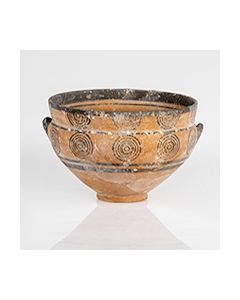 Large cypriot bowl, ex Sotheby's
Large cypriot bowl, ex Sotheby'sDating to the early cypro-archaic period, so-called black-on-red ware II. From an old German private collection, acquired 1970 at Sotheby's. Coming with an ArtLoss certificate.
Price: on request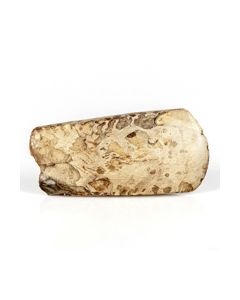 Neolithic thin butted axe head
Neolithic thin butted axe headAxe from the Early Neolithic is made of beautiful reddish brown flint with inclusions. Found in Northern Germany.
Price: on request Cylinder seal with god of the moon and inscription
Cylinder seal with god of the moon and inscriptionCylindrical seal with religious scene and inscription from the Third Dynasty of Ur. A worshipper is lead to the god of the moon Sin.
Price: on request Egyptian funerary figurine for Nefer-hotep
Egyptian funerary figurine for Nefer-hotepInteresting ushabti from Memphis dating to the late 19th Dynasty, New Kingdom. The owner was an official from the Temple of Ptah.
Price: on request Hittite beak-spouted ewer
Hittite beak-spouted ewerImposing vessel with well preserved paint. It shows geometric figures and sun wheel. From the 2nd millenium BC.
Price: on request Old Babylonian cuneiform tablet
Old Babylonian cuneiform tabletVery nicely preserved clay tablet with cuneiform legal text from Old Babylonian times.
Price: on request Old Babylonian cylinder seal
Old Babylonian cylinder sealThis Old Babylonian seal with a worship scene is made from lapis lazuli, a very rare choice for this period.
Price: on request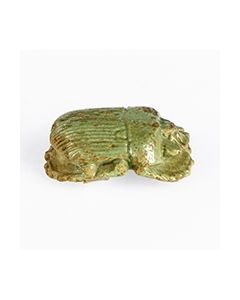 Naturalistic scarab
Naturalistic scarabFunerary scarab in mint green fayence. New Kingdom of Ancient Egypt. The piece is from the famous Matouk collection.
Price: on request Egyptian Eye of Horus
Egyptian Eye of HorusSmall amulet in form of the Eye of Horus. Popular type of protective amulet from Ancient Egypt.
Price: on request Painted Bronze Age cup
Painted Bronze Age cupThe well preserved Bronze Age pottery bears a geometric painted pattern. Acquired in 1977 at Davies Antiques in London, it is claimed to have been found in Syria.
Price: on request Massive bronze lance head from the Holy Land
Massive bronze lance head from the Holy LandNicely preserved, large piece from an old Massachusetts collection. Acquired from the Archaeological Shop at the Tel Aviv Hilton Hotel, Israel, in 1968 or 1969.
Price: on request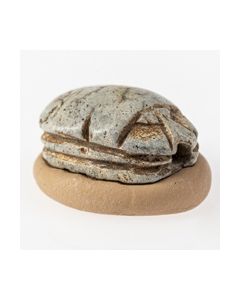 Canaanite scarab
Canaanite scarabLocal levantine production during the 13th to 15th dynasty of Egypt. With an export permit from the Israel Antiquities Authority.
Price: on request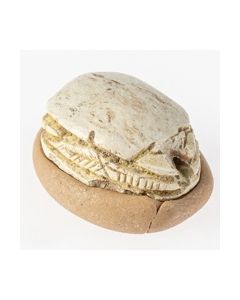 Canaanite scarab
Canaanite scarabLocal levantine production during the 13th to 15th dynasty of Egypt. With an export permit from the Israel Antiquities Authority.
Price: on request Egyptian Eye of Horus, New Kingdom
Egyptian Eye of Horus, New KingdomSmall amulet in form of the Eye of Horus. Popular type of protective amulet from Ancient Egypt.
Price: on request Scarab with magic formula
Scarab with magic formulaThe stamp shows the anra formula in a cartouche. The amulet should thus serve a magic or ritual purpose for its owner.
Price: on request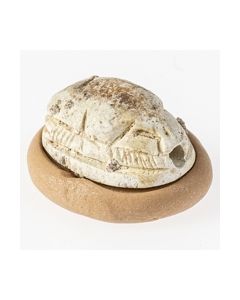 Canaanite scarab with pseudo hieroglyphs
Canaanite scarab with pseudo hieroglyphsThe scarab amulet was made during the Second Intermediate Period of Egypt or slightly later in Canaan. It has pseudo hieroglyphs on the bottom side.
Price: on request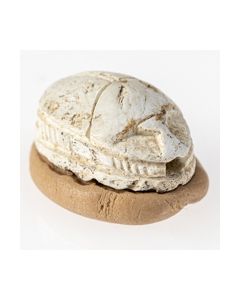 Canaanite scarab with pseudo hieroglyphs
Canaanite scarab with pseudo hieroglyphsThe scarab amulet was made during the Second Intermediate Period of Egypt or slightly later in Canaan. It has pseudo hieroglyphs on the bottom side.
Price: on request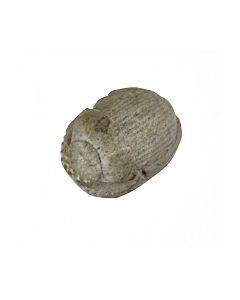 Egyptian scarab
Egyptian scarabThe scarab is made of beautiful green stone. Schematical upper side, unengraved bottom side. From the New Kingdom of Ancient Egypt.
Price: on request Bow fibula of the Urnfield culture
Bow fibula of the Urnfield cultureExcessively rare brooch type from Late Bronze Age in Bavaria. It is known from the Urnfield period hoard of Reisen near Munich in Germany. This piece has been found near Regensburg, Germany.
Price: on request Perfectly preserved bronze sword
Perfectly preserved bronze swordBronze sword with long, narrow blade with pronounced midrib and a long grip thorn with a rivet hole at the end. From an old French collection.
Price: on request Egyptian wooden ushabti
Egyptian wooden ushabtiWonderful figurine from the 18th dynasty of ancient Egypt. It has an interesting provenance and exhibition record.
Price: on request

